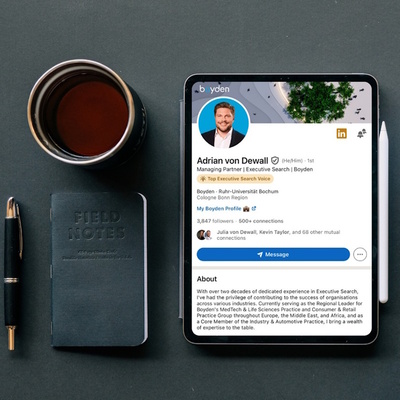Adrian von Dewall provides practical guidance on how strategic networking after a career break can create a supportive system that aligns with your renewed professional identity.

So, you’ve tackled those career gaps, made your powerful comeback, and successfully rebranded yourself. What’s next? The final piece of the puzzle is often the most overlooked but arguably the most crucial: networking. After a break, re-engaging with your professional network isn’t just about sending out a few LinkedIn requests, it’s about building authentic, meaningful connections that align with your refreshed personal brand.
Let’s dive into how you can redefine your networking strategy post-break, with practical tips and real-world examples that’ll help you reconnect and thrive in your industry.
Why Networking Matters More Than Ever
Networking is the lifeblood of any career, but after a break, it becomes even more critical. It’s not just about landing a new job or finding clients, it’s about staying relevant, sharing your new insights, and solidifying your place in your industry. Think of networking as the glue that holds your rebranded professional identity together. It’s your way of showing the world that you’re back, better than ever, and ready to contribute.
Step 1: Rekindle Old Connections
Before you start forging new relationships, it’s essential to reconnect with the ones you already have. These are the people who know you, your work ethic, and your value. They can be your biggest advocates as you step back into your career.
Example: A colleague of mine, who took a two-year break to focus on family, started her networking journey by reaching out to former colleagues. She didn’t just send a generic “let’s catch up” message; she personalised each outreach, mentioning specific projects they worked on together and how those experiences shaped her during her break. The result? She rekindled relationships that opened doors to new opportunities, one of which led to her current role.
Tip: When reconnecting, don’t just focus on what you need. Offer value by sharing insights you’ve gained during your break, or ask how you can support their current projects. Authenticity is key.
Step 2: Engage with Purpose on LinkedIn
LinkedIn is your professional playground, and it’s time to play. But instead of just liking posts and scrolling through your feed, engage with purpose. Comment thoughtfully on posts, share articles that resonate with your brand, and contribute to discussions that align with your expertise.
Example: During my own rebranding journey, I made it a point to share my insights on executive search trends, diversity in leadership, and personal reflections on balancing work and life. This not only kept me visible but also attracted like-minded professionals who were interested in similar topics. One of these connections turned into a collaborative project that further enhanced my brand.
Tip: Set aside 10-15 minutes each day to actively engage on LinkedIn. Consistency is key to staying top-of-mind in your network.
Step 3: Attend Industry Events (Virtual and In-Person)
Industry events are goldmines for networking. They offer a platform to meet new people, learn about the latest trends, and showcase your rebranded self. With the rise of virtual events, you don’t even have to leave your home to make an impact.
Example: A friend of mine who re-entered the tech industry after a break started attending virtual conferences and webinars. She didn’t just passively watch; she actively participated in Q&A sessions, connected with speakers on LinkedIn, and followed up with personalised messages. This proactive approach led to new connections, one of which resulted in a speaking engagement at a later event.
Tip: Whether virtual or in-person, always follow up with the people you meet. A quick LinkedIn message referencing your conversation can go a long way in building lasting relationships.
Step 4: Give Before You Ask
One of the best ways to build authentic connections is by offering value before you ask for anything in return. Share your knowledge, offer to help with a project, or simply provide a thoughtful introduction between two people in your network.
Example: I once introduced a former colleague who was looking for a marketing consultant to another connection of mine who specialised in that area. They ended up working together, and both were grateful for the introduction. Later, when I needed advice on a branding project, both were more than happy to help.
Tip: Think about how you can add value to others before focusing on what you need. This approach not only strengthens your relationships but also makes your network more willing to support you when the time comes.
Step 5: Stay Authentic and Patient
Building or rebuilding a network isn’t an overnight process. It takes time, consistency, and most importantly, authenticity. Don’t force connections; let them grow naturally. Be yourself, share your journey honestly, and don’t be afraid to show vulnerability. People connect with people, not just profiles.
Example: One of my peers shared her journey of re-entering the workforce after a long break on LinkedIn, complete with the challenges and doubts she faced. The response was overwhelming, with people from all walks of life reaching out to support her and share their stories. This authentic approach helped her build a strong, supportive network that continues to grow.
Tip: Don’t be afraid to share your story, including the ups and downs. Authenticity attracts genuine connections.
Your Network is Your Net Worth
Networking after a career break isn’t just about reconnecting with old contacts or meeting new people - it’s about building a support system that reflects your rebranded identity. It’s about creating meaningful, authentic connections that will help you grow and thrive in your renewed career journey.




